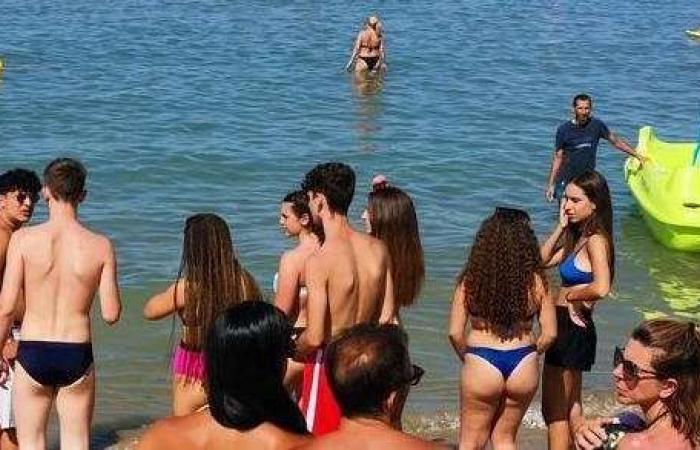Tourists crowd beaches and restaurants, prices rise and consumers protest. It seems like a dog chasing its tail, but the reality, as described by trade associations, is exactly this. According to the latest ISTAT data referring to May, restaurant and pizzeria price lists are traveling at a speed three or four times higher than the general average: +3.6% for restaurants and +3.1% for pizzerias compared to an increase calculated at +0.8.
customers
Why this discrepancy? Try giving an explanation Alberto Corraro (responsible for Adinconsum of Pescara).
“Of course,” he emphasizes, “we can’t help but be worried about this trend because part of 2022 and in 2023 we had inflation rates around 12%. Now it has returned to acceptable levels, but prices have increased and those costs have not disappeared. Istat has detected them, but there is always a question I ask myself: do prices, once increased, return to normally acceptable levels? Some yes and others no.”
According to the manager of Adiconsum “now, in summer, there is strong demand, the bathing establishments are packed with bathers, the restaurants are full and this demand increases prices”.
Here he is, the dog chasing his tail. «The inflation was external», she specifies, «and that is deriving from the increase in energy costs (gas and electricity) with effects on everything».
And there doesn’t seem to be a solution in sight. “We can only take note of what is happening with all the tourism we see these days. Given the large influx of people, both Italians and foreigners, prices are rising. We feel helpless, but we will continue to fight against speculation. I always remember that an informed consumer is half saved. Maybe I’m too realistic, but the impact of prices on families is devastating. I’ve seen electricity bills of 2,000, 3,000 and even 5,000 euros per family for just three months of consumption.”
prices
According to an average estimate by consumer associations, the prices listed on menus are increasingly higher and attention is inevitably drawn to excessive markups: on a single glass of wine, water and coffee we are around 3-4-500%. At the restaurant, a one-liter bottle of sparkling water strictly in glass, which at the supermarket costs an average of 60 cents, is paid on average 4 euros, which rises to at least 7 (sometimes even 10) in the starred restaurant that serves designer water that an ordinary citizen at the supermarket pays ten times less. One of the most significant gains concerns coffee. A pod costs 30-40 cents, to the barista who offers it to us at 1 euro/1.30 euros it costs approximately 20-25 cents, while at the restaurant it is difficult to have it for less than 2 euros. According to an estimate by Fatto Alimentare, a restaurant with 50 seats a day that offers a bottle of treated water at the price of 2 euros, in two weeks covers the annual costs of the plant and in a year earns at least 30 thousand euros with a markup margin “far superior to any other product served at the table”. In addition to saving space in the warehouse and time in managing orders and disposing of empty bottles.
the wine
As for wine prices, common sense should suggest a markup of 200% for a low-end wine paid by the restaurateur under 6 euros per bottle, 150% for medium-end wines (6-12 euros per bottle), 120% for high-end wines (12-25 euros), 100% for very high-end wines (25-50 euros) and just 50% for luxury wines, i.e. bottles that the producer is paid more than 50 euros per bottle. In reality, here too, we are witnessing strong speculation with excessive markups. The highest revenues are obtained by selling single glasses, whose prices on average fluctuate between 6 and 8 euros. It is enough to serve 2 and the cost of the bottle is already repaid.
public establishments
“There are many ways to calculate markups. However, be careful, traditional catering is not a business of selling goods, it is a service business” he warns Luciano Sbragadirector of the Fipe Study Centre, the federation of public establishments which adheres to Confcommercio, contacted by Press, and «in the case of restaurants, for the formation of prices, we first look at the average receipt that is needed to keep the business afloat. In short, more than the cost of the raw material, it is necessary to keep in mind how much the customer spends, knowing that compared to the past the consumption model has changed, instead of the complete menu made up of first course, second course and side dish, today at most one and a half dishes are consumed and it is all the costs must then be loaded onto this, from staff to rent to everything else.” This reasoning also applies to water and wine: these products too, in fact, contribute to forming the average receipt, so lowering the prices of these products, say the operators in the sector, would mean having to then increase others”.
For Latest Updates Follow us on Google News



